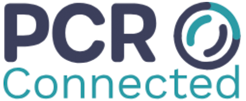All you need to know about Making Tax Digital
Making Tax Digital will deliver HMRC’s vision of digitalising the UK tax system from April 2019. Businesses will need to maintain digital records and send them to HMRC quarterly using commercial software. Read this post to find out how these changes will affect your business.The government has outlined plans to simplify and streamline the UK tax system through ‘Making Tax Digital’. This initiative will transform how businesses and people pay tax by creating a digitalised online tax system. Once fully implemented, businesses will be unable to pay tax manually – a process costing the Exchequer over £8bn a year due to avoidable tax mistakes.
How will Making Tax Digital affect your business? The first stage comes into force next April 2019. As a result, businesses should understand their responsibilities and ensure their accounting software is fit for purpose.
Overview of Making Tax Digital (MTD)
Making Tax Digital will deliver HMRC's vision of digitalising the UK tax system in a staged approach. Businesses will need to maintain digital records and send them to HMRC quarterly using commercial software. The first stage applies to VAT reporting specifically, as outlined below.
Timeline for MTD
- April 2019: VAT reporting by all VAT registered businesses with a turnover above the VAT threshold (currently £85,000).
- From April 2020 (at the earliest): All other tax reporting, including income and corporation tax.
A digital tax system will give businesses greater visibility, control and flexibility over their finances. Millions of businesses already bank, pay bills and interact online. Making Tax Digital therefore provides the next natural step which is to digitise routine tasks such as record keeping.
What does MTD mean for your business?
VAT has been online since 2010 and over 98% of VAT registered businesses already file electronic returns. Making Tax Digital builds on this by integrating digital record-keeping to provide a single, seamless process. In addition, quarterly updates are generated and sent directly from your accounting software to HMRC. From April 2019, businesses with turnover above the VAT threshold will need to use the Making Tax Digital system to meet their VAT obligations. Smaller businesses however are exempt but may choose to comply voluntarily.
The benefits of MTD for businesses
- More visibility and less stress: tax is submitted quarterly, reducing surprises and avoiding the stress of processing twelve months of work at the end of the financial year.
- Less paperwork: computer software automatically records money coming in and going out. You just check the data and update it to HMRC each quarter, saving you time.
- Increased efficiency: Digital records reduce the risk of mistakes and allow you to detect mistakes more easily. Furthermore, the administrative burden is reduced by using compatible accounting software.
- Real time data: HMRC collects and processes tax information in real time, reducing nasty surprises and giving you a greater sense of financial control.
Is your accounting software up to scratch?
Making Tax Digital requires you (or your tax advisor) to submit returns online, through either an HMRC app or online accounting software. Businesses already using MTD-compliant software will see little change to their procedures during Stage 1. However, businesses currently keeping their records in a cashbook, spreadsheet or non-MTD-compliant software, will need to make changes. The ability to login to HMRC’s website and key-in VAT return figures will no longer be available. We are pleased to confirm that if you are using either Pegasus Opera 3 or Microsoft Dynamics 365, both of these will be MTD compliant. If you are unsure whether your software is compliant, use the checklist below to confirm your software can:
- Keep records in a digital form.
- Preserve digital records in a digital form.
- Create a VAT return from the digital records.
- Provide HMRC with VAT data on a voluntary basis.
- Receive information from HMRC via the API (application programme interfaces) platform.
You can still use spreadsheets as long as they are combined with third-party commercial software, using APIs, to provide a seamless flow of data from the business to HMRC (and vice versa).
Conclusion
In summary, Making Tax Digital will help businesses streamline their financial processes, improve visibility and save time. By staging the process, HMRC are hoping to smooth the transition. While most businesses will probably already have the processes to adopt Stage 1, it is expected that many will also take the opportunity to provide quarterly updates for other taxes too. By doing so, they will get ahead of the game and ensure they have the processes and software in place for compliance with Stage 2. If you have any questions regarding Making Tax Digital or would like to discuss whether your accounting software is suitable, please get in touch.





